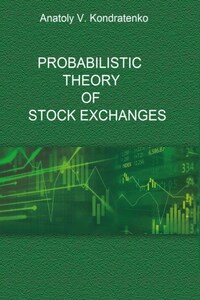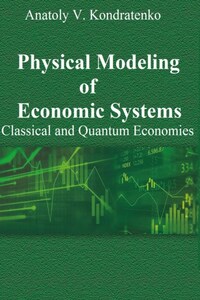This is the third monograph in a series devoted to the development of probabilistic economic theory [Kondratenko, 2005, 2015, 2021]. When the first book was being prepared for publication, the publisher asked the author how soon, in the author’s opinion, this new theory would gain widespread acceptance among economists. His answer was: at the very least 20 years, for the simple reason that it is a priori not enough to put forward another alternative economic theory – first, it is necessary to show its benefits as compared to the others, second – to prove that it is correct, and third – to showcase how it can be used in practice to describe experimental data and develop predictions of economic dynamics. This monograph addresses all three of these issues: it shows how this theory is better than others; it proves, by the example of important organized markets such as stock exchanges, that it is correct; and, based on the analytical and numerical results obtained, it offers a method for describing and forecasting economic dynamics.
It is explained below why stock markets were chosen as the main object of study. It is well known that specialized activities of goods exchange or trade between different producers and different countries plays an eminent role in the growth of the welfare of individuals and states as a whole in the early stages of its development, and then in the subsequent rapid formation and development of capitalism in the world. In this process, the most important place was first occupied by ordinary markets, which facilitated and thus accelerated the process of exchange of some goods or values for others, and then by organized markets, the highest form of which are, in particular, stock exchanges: commodity, financial, currency and others, which form and represent in their entirety the stock exchange economy. This exchange economy is now effectively using all the most advanced methods and tools of electronic trading, including artificial intelligence and algorithmic trading using computers; while the extensive use of the Internet makes the exchange economy very fast, virtual and truly global. It is the high speed of information exchange and transactions that distinguishes the new virtual exchange economy from the traditional real economy. But this specific feature of exchange trading can carry additional risks for both the exchange and the real economy, the tasks of which are still rather superficially understood in the economic academic community. In today's global economic world, the role of stock exchanges has become so significant that it would not be an exaggeration to say that the entire global economy is gradually becoming exchange-based. For sure, it would be more accurate to talk about the transformation of the global economy into a financial economy, but this monograph will be focused on studying only the role of exchanges in the economy, so the term “exchange economy” will be used. The main purpose of exchanges in today's economy is to determine the prices of all traded assets, including various money (currencies), to facilitate their trade and provide financing for the global economic activity. But it is also important that the situation in exchanges is the most universal indicator of the situation in the entire global economy. The paradox of this situation in this global financial world is that there is clearly no correlating situation in the world of theoretical finance. An adequate theory of organized financial markets still does not exist, which means that an adequate theory of the global market real economy is also out of question. This situation gives rise to certain risks of the emergence and uncontrolled development of negative trends in financial markets, which can lead to large-scale financial and then economic crises. And that’s what we regularly observe in real life: the generator of almost all economic crises in modern history are financial crises triggered by a stock market crash.






